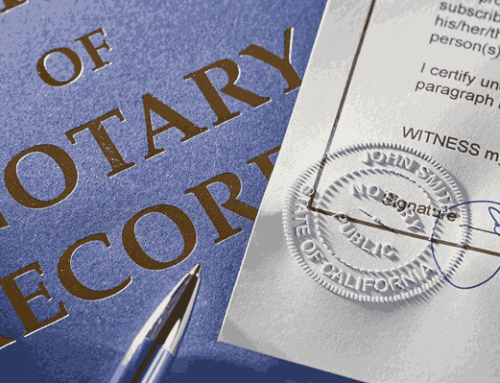In the digital age, the transition to a paperless law office has become imperative for modern legal practices. Not only does going paperless reduce environmental impact, but it also enhances the efficiency, organization, and accessibility of documents. One critical aspect of this transition is effectively managing incoming documents. Mastering incoming document control can streamline operations and elevate your practice, covering everything from client communications to court filings. In this blog, we’ll explore some valuable tips for maintaining control over incoming documents in a paperless law office.
Implement a Document Management System (DMS)
A robust Document Management System (DMS) is the cornerstone of a paperless law office. It provides a centralized digital platform to store, organize, and retrieve documents quickly and securely. Invest in a reputable DMS that offers features like version control, access controls, and powerful search capabilities. Categorize documents using intuitive folders, tags, or metadata, making it easy to locate and manage incoming materials.
Use of Document Management Solution
Utilizing a Document Management Solution allows you to effectively control the influx of incoming documents. A DMS streamlines the process of digitizing, categorizing, and storing documents, ensuring they are readily accessible when needed. It provides tools for assigning metadata, setting permissions, and establishing workflows for document review and approval. With the right DMS, you can automate the routing of documents, reducing manual intervention and the risk of oversight.
Set Clear Document Intake Procedures
Establish standardized procedures for receiving, processing, and storing incoming documents. Train your staff on these procedures to ensure consistency. Implement a protocol for digitizing paper documents that come into the office and integrating them into your DMS promptly. This will prevent documents from piling up and becoming overwhelming.
Create Dedicated Email Accounts
Set up dedicated email accounts for different types of incoming documents. For instance, create one for client communications, another for court-related documents, and so on. This not only categorizes emails effectively but also prevents important ones from getting lost in a cluttered general inbox.
Utilize Optical Character Recognition (OCR) Technology
OCR technology converts scanned documents and images into editable and searchable text. This can be immensely useful for incoming documents that arrive at scanned files. OCR enables you to extract text, index documents, and make them searchable within your DMS. This dramatically enhances the efficiency of document retrieval.
Automate Document Routing and Workflow
Set up automated workflows for incoming documents. For example, configure your DMS to route certain types of documents to specific individuals or departments for review and approval. This minimizes manual intervention, reduces the risk of documents being overlooked, and expedites the decision-making process.
Encryption and Security Measures
Incoming documents may contain sensitive information. Prioritize document security by using encryption protocols to safeguard sensitive data. This includes both documents in transit (during email exchanges) and documents at rest (stored within your DMS). Regularly update and patch security software to fend off potential cyber threats.

Regularly Review and Purge
Frequent review and purging of documents are essential to maintaining a clutter-free digital workspace. Establish retention policies that dictate how long different types of documents need to be kept. This prevents your DMS from becoming an electronic equivalent of a stuffed filing cabinet.
Implement E-Signature Solutions
Incorporate electronic signature solutions for contracts and agreements. This not only expedites the signing process but also eliminates the need for printing, signing, scanning, and resending documents. E-signatures are legally binding and widely accepted in most jurisdictions.
Train Staff Effectively
Transitioning to a paperless office requires your team’s buy-in and competence. Provide thorough training on using the DMS, OCR tools, email categorization, e-signature software, and any other technology you implement. This will ensure that your staff can effectively manage incoming documents and collaborate seamlessly.
Monitor and Fine-Tune the System
Regularly review the efficiency of your document management system and intake procedures. Analyze the workflow to identify bottlenecks or areas for improvement. Solicit feedback from your team to understand their experience with the paperless system and make necessary adjustments.

Why Is a Legal Document Management System Important?
A Legal Document Management System (DMS) is crucial in the legal profession for several reasons:
Document Organization and Retrieval:
Legal firms handle a vast amount of documents, from contracts and case files to court documents and client correspondence. A DMS helps organize these documents systematically, making it easy to retrieve the right document quickly. This can save significant time and effort.
Document Version Control:
Legal documents often go through multiple drafts and revisions. A DMS tracks these changes and maintains a history of document versions. This is essential for ensuring accuracy and compliance.
Security and Access Control:
Legal documents typically contain sensitive and confidential information. A DMS allows firms to implement strict access controls, ensuring that only authorized individuals can view or edit specific documents. This helps maintain client confidentiality and data security.
Collaboration and Workflow Management:
In a legal setting, collaboration is common among lawyers, paralegals, and support staff. A DMS enables efficient collaboration by allowing multiple users to work on a document simultaneously. Track changes, and manage workflows, such as document approvals.
Audit Trail and Compliance:
Legal professionals are often required to demonstrate compliance with various regulations and standards. A DMS generates audit trails that show who accessed, modified, or shared documents, which are essential for compliance reporting.
Document Retention and Disposal:
Legal professionals must adhere to strict rules regarding document retention and disposal. A DMS automates this process, ensuring that documents are retained for the required period and disposed of when no longer needed. Hence reducing the risk of legal liability.
Search and Retrieval:
Legal professionals frequently need to search for specific information within documents. A well-structured DMS offers robust search capabilities, allowing users to find relevant information quickly.
Remote Access and Mobility:
With the increasing trend toward remote work, a DMS that offers secure remote access is invaluable. Lawyers and staff can access documents from anywhere, facilitating flexibility and productivity.
Cost Savings:
While implementing a DMS may require an initial investment, it often results in long-term cost savings. The system streamlines document-related processes, reduces the need for physical storage space, and minimizes the risk of errors or lost documents.
Client Service and Efficiency:
A DMS enhances a legal firm’s ability to provide excellent client service. Lawyers can respond to client inquiries faster, access case-related information readily, and provide clients with real-time updates.
Disaster Recovery:
Legal documents are critical assets, and their loss due to disasters like fires or floods can be catastrophic. A DMS typically includes backup and disaster recovery features to protect against such incidents.
Summing Up
In the evolving landscape of legal practice, a paperless law office can significantly boost efficiency, reduce overhead costs, and enhance client service. By using a Document Management Solution and following these tips, you can streamline your practice for digital success. Remember, the key lies in adopting the right technology, establishing streamlined procedures. Continually refining your processes, and cultivating a culture of adaptability among your team.





